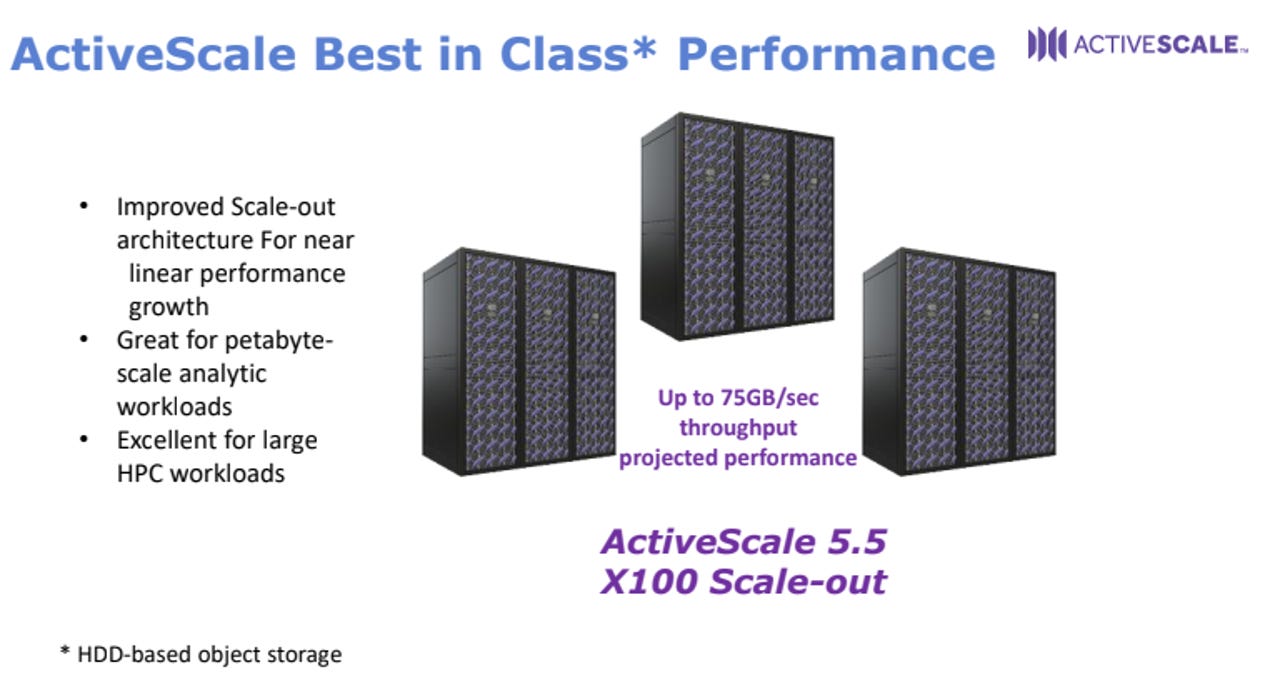Western Digital updates its ActiveScale storage system portfolio


Western Digital on Tuesday announced enhancements to its ActiveScale storage system portfolio, with performance enhancements for large-scale data workflows and new features that could change the way people use storage.
First, with the introduction of ActiveScale OS 5.5, the ActiveScale X100 storage system can deliver data throughput of up to 75 GB/second in scale out configurations -- that's a 3X performance improvement. This level of high-performance object storage is key for data-heavy applications, including AI and HPC workloads.
"We deal with a lot of large corporations, government entities and research institutes that have a lot of data to handle," Erik Ottem, Western Digital's senior director of product marketing, said to ZDNet.
The update also includes multiple new features. The new Data Pipeline Service offers real-time object notifications for streamlined workflows. This should simplify workflow processing for a variety of use cases, such as real-time analytics, IOT, mobile applications, business processes or media and entertainment.
The feature demonstrates that Western Digital now offers more than just passive storage options, Ottem said to ZDNet.
For instance, a media company could have an S3 object they want to convert to an MP4 file. If the object is sent to an ActiveScale bucket, the Data Pipeline Service would receive an event notification and then notify a messaging service like Kafka. Then, Kafka could talk to the relevant application and kick off an action to convert the object.
Another new feature, called Asynchronous Geo-Spread, offers multi-site disaster recovery with low-latency data ingestion. Meanwhile, ActiveScale View gives users simple system management tools modeled after the AWS S3 management framework.